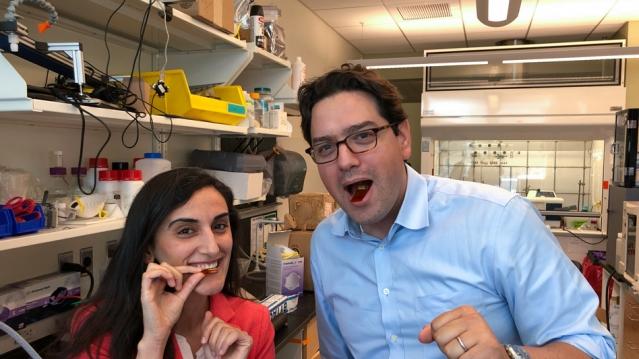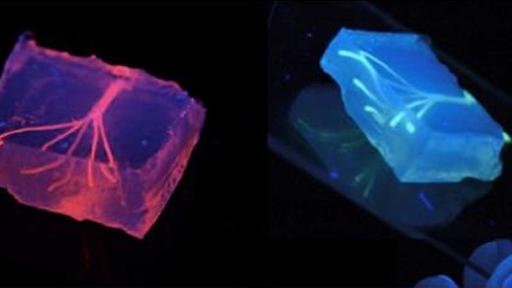BrighamAndWomenSHospital
Latest

Edible sensor can measure your gut from within
Studying the stomach for a long period can be tricky, which is why medical tech has turned to experimenting with sensors you can swallow. Researchers at MIT and Brigham and Women's Hospital have built one designed to cling to the walls of the gastrointestinal tract and monitor its contractions to track afflictions.

Researchers are using 3D printers to make blood vessels
There has been talk of printing blood vessels for a few years, but it's tricky to make tissue that fits the complex shapes of a human body while remaining effective. However, a research team at Brigham and Women's Hospital may have licked that problem: they've 3D printed vessels using a new technique that allows for intricate yet capable designs. Their process first prints agarose (sugar-based molecule) fibers as templates for the vessels, and then covers that in jelly-like hydrogel to produce a cast. Since the agarose is sturdy, scientists can pull it out to create channels without damaging any cells inside the gel; the resulting vessels are much better at transporting liquid and otherwise behaving like the real deal.

Researchers create 'programmable' stem cells through stress
Making stem cells in the lab is typically a complicated process, and there isn't much variety in the results without resorting to foreign DNA. However, researchers at both Brigham and Women's Hospital and Japan's RIKEN may have found a way to easily create most any stem cell a doctor would need. Their new technique subjects adult cells to extreme stress, such as oxygen deprivation. The victims that survive the process retreat into a state much like that of an embryonic stem cell; after that, scientists just have to grow the cells in the right environment to get the stem cells they want. It will be a while before the team tests this process with humans, but it could lead to stem cells tailor-made for specific patients -- you'd only have to provide a blood sample to get replacement tissues.

Jellyfish-mimicking device could snatch cancer cells right out of the bloodstream
If you think the picture above looks like droplets of blood being snared in a sticky tentacle, then you have a scarily active -- but in this case accurate -- imagination. It's actually a microfluidic chip that's been coated with long strands of DNA, which dangle down into the bloodstream and bind to any cancerous proteins floating past -- directly imitating the way a jellyfish scoops up grub in the ocean. If required, the chip can release these cells unharmed for later inspection. According to the chip's designers at Boston's Brigham and Women's Hospital, the catch-and-release mechanism can be put to both diagnostic and therapeutic use in the fight against Big C, and can also be used to isolate good things, like fetal cells. The next step will be to test the device on humans -- at which point we may owe an even greater debt of gratitude to our gelatinous friends. [Image credit: Rohit Karnik and Suman Bose]


